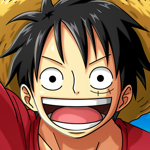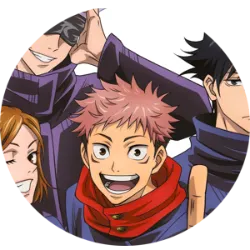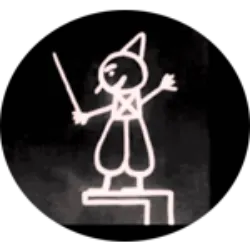The iconic bandana
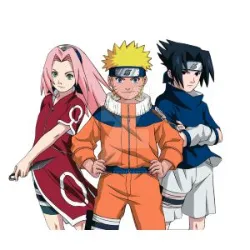
Naruto's iconic headband, one of the franchise's most iconic accessories, came about for a practical reason. Originally, author Masashi Kishimoto planned for Naruto to wear swimming goggles as part of his look. However, as he repeatedly drew the character, he realized that illustrating the goggles became laborious and inefficient. Kishimoto then decided to simplify the design by creating the famous headband, a distinctive element that would soon become a hallmark of the character and the entire series.
In addition to its aesthetic function, the headband carried a deep meaning. The symbol of the village where Naruto belongs — the Hidden Leaf Village (Konohagakure) — was emblazoned in the center of the headband, representing his loyalty to his homeland and his desire to become a Hokage. The simple design, with the metal plate and black band, was a smart choice by Kishimoto, providing an easy way to identify different characters and villages, while giving Naruto an easily recognizable characteristic.
Over time, the headband became not only a functional item for the author, but also a strong symbol of identity and perseverance for Naruto, reflecting his journey throughout the series.
Konoha Sannins: Japanese Folklore
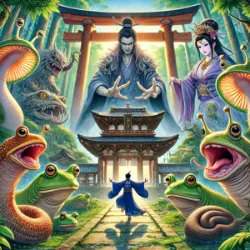
The three legendary Sannins of Konoha, Jiraiya, Tsunade, and Orochimaru, have their roots in a Japanese folk tale called Jiraiya Gōketsu Monogatari. This ancient tale, which dates back to the Edo period, directly inspired the creation of these characters. In the legend, Jiraiya is a ninja who can transform into a frog, Tsunade is a princess with the power to control giant slugs, and Orochimaru is a villain who uses snakes as his allies. These mythological figures were reimagined by Masashi Kishimoto and became mainstays of Naruto.
Jiraiya, in the Naruto universe, is a wise and powerful master, known for his fighting style involving frogs and his connection to wisdom and training. Her version in Naruto maintains the idea of a connection with frogs, but the focus is on her ninja skills and her role as a mentor.
Tsunade, inspired by the princess of legend, is a powerful medical ninja, whose relationship with slugs refers to the control of giant creatures, and her physical strength and healing abilities make her one of the most respected figures in Konoha.
Orochimaru, the villain of the story, maintains a bond with snakes and is portrayed as a ninja obsessed with immortality and power, characteristics that put him in constant conflict with his former companions.
Thus, the Sannins of Naruto are living homages to this rich mythology.
Test yourself with one of these challenges 👇
Discover some interesting facts about Naruto
Rock Lee and Bruce Lee
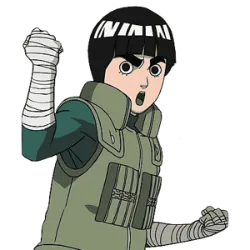
Rock Lee, one of Naruto's most beloved characters, was heavily inspired by the legendary martial artist Bruce Lee. Kishimoto, the creator of Naruto, made no secret of his homage to the martial arts icon when creating Lee, both in his name and in his fighting philosophy. The name "Rock Lee" is a clear reference to the famous Bruce Lee, replacing "Bruce" with "Rock", which gives the character a distinct touch, but still maintains the connection with the martial arts master.
Aside from the name, the main similarity between the two is their fighting style. While Bruce Lee was known for his focus on real physical skills and pure martial arts training, Rock Lee follows the same principle, being a master of taijutsu — a fighting style based on hand-to-hand combat, without the use of chakra, unlike many other ninjas in Naruto, who rely on mystical abilities. Lee, like Bruce Lee, represents the idea that physical strength, discipline and dedication can overcome any obstacle, even if one does not have supernatural powers.
Lee's appearance and personality are also inspired by Bruce Lee, with his relentless dedication to training and his philosophy of constant improvement. The character, with his unique style and persistence, conveys the same energy and determination that Bruce Lee displayed in his life and career.
Naruto almost didn't have the name Naruto!
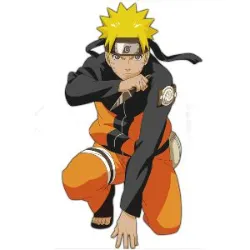
The name of the protagonist of Naruto, one of the most iconic figures in anime, almost wasn't that! Originally, Masashi Kishimoto didn't have the idea of naming the main character Naruto. The name that would end up becoming known worldwide was inspired by narutomaki, a type of spiral fish used in ramen, Naruto's favorite dish. The author, when reflecting on the personality and characteristics of the protagonist, thought that the name would make sense, given Naruto's love of food and the spiral shape that resembled his surname, "Uzumaki".
Before deciding on "Naruto Uzumaki", Kishimoto considered other names. He tested several alternatives, but none of them seemed to fit as well as the name that ultimately defined the hero's identity. The name "Naruto" ended up being the one that best represented both the essence of the character and the connection with Japanese culture, especially with its association with ramen, which would become an iconic part of the story.
Thus, although many options were considered, it was the name inspired by the Japanese dish that became a trademark of the character, reflecting both his humble origins and his love for overcoming and food.
Women dub both the Brazilian and Japanese versions of the anime Naruto
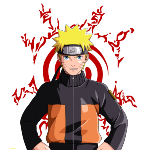
Women dub both the Brazilian and Japanese versions of the anime Naruto. Junko Takeuchi is Japan's official voice actress, known for voicing characters from series such as One Piece and Digimon. In Brazil, the official voice actress is Úrsula Bezerra. The name Naruto Uzumaki originates from Japan, and refers to the fish roll very consumed in the country. Uzumaki, which is the character's last name, means whirlpool, present in the anime's logo and in Naruto's favorite dish, ramen.
It's no surprise that One Piece and Naruto are rivals, as are Mario and Sonic

It's no surprise that One Piece and Naruto are rivals, as are Mario and Sonic. However, the creators of these characters like to have fun, and on the cover of One Piece issue 766, we can see a person sitting behind Nami eating meat, and wearing the Konoha outfit, the symbol of Naruto. Of course this person is Naruto! Another curiosity is that Naruto is eating meat, which is Luffy's favorite food, and Luffy eats Ramen, Naruto's favorite food.
The creator of the manga/anime Naruto, Masashi Kishimoto
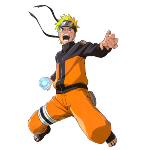
The creator of the manga/anime Naruto, Masashi Kishimoto, was inspired by the character Kurama Youko from Yu Yu Hakusho to create the legendary Nine-Tails Fox. A Kitsune is the Japanese word for "fox" and is an iconic character in Japanese folklore. According to legend, Kitsune have magical powers and above average intelligence. They can also take the form of a human being, usually a beautiful woman or an old woman. These foxes also have tails, which grow into a new one every thousand years. As a result, they become smarter and stronger.
Test yourself with one of these challenges 👇
HOME



